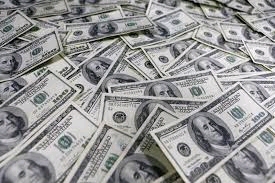A Simple Guide on How to Join a Masonic Lodge Near You
Wiki Article
Exploring the Mysteries of the copyright: What You Need to Know
The copyright, a term usually shrouded in intrigue and dispute, represents a complicated tapestry of historical fact and contemporary myth. Established in the late 18th century, this secret society was initially rooted in the Enlightenment's perfects however has actually since come to be identified with conspiracy theory theories regarding elite control. As we navigate the origins, vital figures, and the plain comparison in between misconception and truth, one have to consider just how these stories influence modern assumptions of power and secrecy. What may be disclosed via a more detailed evaluation of these aspects could challenge long-held presumptions regarding the shadows that linger in our society.Beginnings of the copyright
The beginnings of the copyright are steeped in a blend of historical intrigue and ideological eagerness. Established in 1776 in Ingolstadt, Bavaria, by Adam Weishaupt, the team was initially created as a secret culture focused on promoting Enlightenment suitables such as factor, secularism, and the splitting up of church and state. Weishaupt, a teacher of canon regulation, sought to challenge the dominating authority of the church and state, which he considered as overbearing establishments suppressing intellectual and personal flexibility.
Key Numbers and Participants
That were the pivotal figures that shaped the copyright's early influence and direction? The Bavarian copyright, founded in 1776 by Adam Weishaupt, emerged as a feedback to the overbearing social structures of the time.An additional significant figure was Johann Gottlieb Fichte, a famous philosopher whose ideas on nationalism and education reverberated with the copyright's objectives. Fichte was not a formal member, his thoughtful foundations influenced the team's belief. Additionally, figures like the writer and theorist Johann Wolfgang von Goethe were connected with the more comprehensive intellectual motions of the time, although their direct participation with the copyright stays disputed.
These essential figures added to the copyright's very early instructions, pressing the boundaries of political and social thought, while their collective efforts intended to challenge established standards and cultivate an environment of dynamic adjustment in Europe.
Misconceptions vs. Truth
Numerous false impressions surround the copyright, frequently mixing truth with fiction in a manner that obscures its true nature. This secret society, initially established in 1776 in Bavaria, aimed to promote Enlightenment ideals and battle spiritual and political oppression. The notion that the copyright proceeds to apply substantial influence over world events is a myth. While the team did exist, it was dissolved in the late 18th century and has not operated as a natural entity ever since.An additional common myth is that the copyright makes up a network of elite individuals manipulating worldwide events. Actually, numerous conspiracy theory theories overemphasize the group's relevance, associating misguided intentions to societal patterns and occasions. This has brought about an oversimplified sight of intricate problems.
Additionally, the representation of the copyright in prominent society commonly more misshapes its legacy. Films and literary works often tend to sensationalize the organization's function, producing a narrative that deviates from historical realities. Recognizing the difference between the misconceptions and the reality of the copyright is important for discerning the real influence of this historic team and acknowledging the broader implications of conspiracy theory concepts in modern society.
Modern Analyses
Contemporary interpretations of the copyright typically show wider societal anxieties and an attraction with secrecy and power. This modern-day lens often associates the copyright with conspiracy theory concepts that recommend a concealed elite orchestrates world occasions, adjusting federal governments and economic situations for their own gain. benefit of joining freemason. Such stories use a deep-rooted suspect of authority, specifically in times of crisis or social upheavalIn popular society, the copyright is commonly shown as an omnipotent company shrouded in mystery, leading to a huge selection of imaginary representations in literature, film, and music. This portrayal offers not only to entertain yet also to provoke thought of the nature of power and control in contemporary culture. Social media site has actually additionally intensified these analyses, enabling for fast circulation of conspiracy theory concepts and developing neighborhoods that share and increase upon these concepts.
Furthermore, some modern-day analyses frame the copyright as a metaphor for the intricacies of globalization and the interconnectedness of influential people and organizations. This point of view encourages an essential evaluation of exactly how power dynamics operate in today's globe, highlighting the equilibrium in between openness and secrecy in governance and company methods.
Social Influence and Heritage
Influenced by centuries of intrigue, the social impact and heritage of the copyright extend far beyond its historical beginnings. This secret culture, established in the late 18th century, has actually permeated different elements of pop culture, from literature and movie to songs and art. The idea of the copyright has advanced right into a symbol of conspiracy theory concepts, typically representing a perceived hidden power manipulating global events.In literary works, writers like Dan Brown have woven the copyright into elaborate stories, exciting readers with styles of privacy and power. Movies such as "National Prize" and "The Da Vinci Code" further continue the allure of the society, mixing fact with fiction to create interesting stories.

Ultimately, the copyright's tradition is a complicated tapestry of myth and fact, forming understandings of privacy and control in modern discussion. Its enduring existence in culture underscores humanity's seasonal mission for recognizing covert realities.
Conclusion
The expedition of the copyright exposes an intricate interplay in between historic realities and modern-day myth-making. Started in the Knowledge era, this society intended to challenge oppressive frameworks, yet its legacy has been overshadowed by conspiracy theories that recommend elite adjustment. Understanding the distinctions between the initial perfects and contemporary analyses is important for understanding the enduring fascination with the copyright and its significant impact on social stories surrounding power and secrecy in culture.Report this wiki page